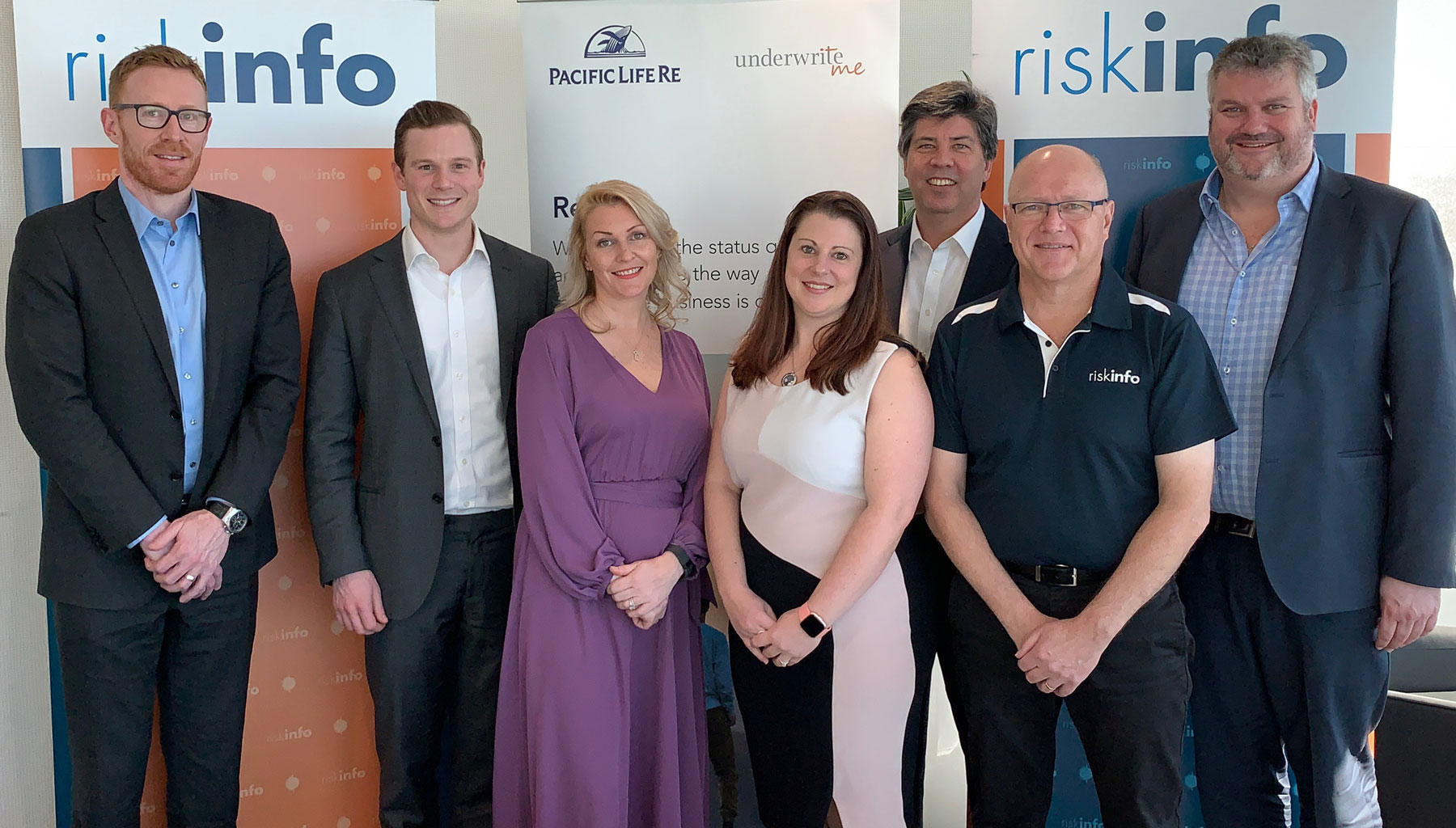In Part 2 of our Round Table with Pacific Life Re, our panellists reflect on the various life insurance product issues demanding attention, including the pricing and sustainability challenges impacting all parts of the life insurance and advice sectors…

Panelists
- Pacific Life Re Voices
- Andrew Gill – Managing Director, Pacific Life Re (Asia and Australia), Co-host
- Tyson Johnston – General Manager, Pacific Life Re (Australia)
- Adviser Voices
- Marc Bineham – Adviser, Noall & Co, National President Association of Financial Advisers
- Rob Vitnell – Adviser, Victorian State Manager, Australian Financial Risk Management
- Amie Baker – Adviser, Rekab Advice
- Kathryn Fitch – Adviser, Evalesco Financial Services
Part 2 – Product Challenges
Premium Pricing
Marc Bineham, adviser principal with Noall & Co and National President of the Association of Financial Advisers, raised an issue that has annoyed him for a long time – in which significant premium rate reductions are offered for new business cases because the product manufacturer has changed reinsurers. Marc says advisers must be extremely careful when changing their clients’ policies but says that is often the only way they can access those premium rate reductions for their existing clients, as the new rates don’t apply to existing inforce business.
Andrew Gill conceded these premium rate reductions happen regularly and highlighted the fact that, at least historically, the industry has been poor at collecting and interpreting data. He noted APRA was in the process of undertaking a DII thematic review and that there remains a degree of uncertainty around pricing within the Australian market.
…there remains a degree of uncertainty around pricing within the Australian market
Andrew supported Marc’s point fully, in reflecting the challenge for advisers to both serve their clients’ best interests but not be seen at the same time to be churning life insurance business.
In terms of finding a solution to this adviser challenge, according to Andrew, the answer is to get better at utilising the data and information available at time of underwriting and claims and assess its long-term impact on to pools of lump sum and disability pricing and experience.
Amie Baker also voiced how important it would be for her and her business to be able to access the ‘real numbers’ around where lump sum and IP premium rates should be positioned. She also questioned, with a seemingly shrinking market, whether this may also have an impact on premium pricing.
AFRM’s Rob Vitnell agreed with the need for the market – particularly reinsurers and insurers – to be able to deliver sustainable pricing instead of going through aggressive and conservative cycles, which only serve to challenge advisers and their clients alike. Rob cited the challenging case where an AFRM client who he considered to have troubling mental health issues was accepted for life insurance cover at standard rates. These more aggressive cyclical approaches then led to legacy business issues, according to Rob, which he felt served no-one’s interests in the long-term.

Legacy Issues
In the real world, Rob reflected that while technology, efficiency improvements and simplified processes were great, the challenge of sustainable pricing, especially for legacy products, was more the elephant in the room.
Andrew affirmed the challenge of new business rates compared with rates available to legacy books of business was something about which the industry should be seriously mindful.
While it’s not ‘sexy’, Tyson Johnston readily agreed that existing legacy books and the administration systems that operate them represent serious impediments to moving the industry forward.
…existing legacy books and the administration systems that operate them represent serious impediments to moving the industry forward
He considered there were some advantages associated with new entrants to the sector, such as insurers who don’t have any legacy books, together with other, more established life companies, who do hold large legacy books, but who have also been injected with significant capital from their parent companies to invest in new administration systems.
He reflected that the unfortunate circumstances of housing expensive and legacy systems create limitations and restrictions on improving product life cycles and being agile in improving return on capital.
Flexibility on Risk
For Rob, flexibility of risk is a big thing he’d like to see introduced. For example, he has a young family with growing children, “…but in ten years’ time, my risks are going to be very different.
“So, in ten years’ time, how do I move my risk from term life to trauma, and pay the same level of premium?”
Rob says this all gets back to product manufacturers being more adaptable and having the ability to deliver more flexibility: “We need more of that to better serve our current and future clients.”
All the bells and whistles on trauma products have almost no value whatsoever, says Rob, referencing 85 – 90 percent of all trauma claims relating to cancer, stroke, heart attack and heart surgery.
…the industry needs to go back to the issue of affordability, especially for trauma insurance
Marc’s take is that the industry needs to go back to the issue of affordability, especially for trauma insurance.
For Kathryn Fitch, one solution that is excellent, but not really embraced by advisers, is descending cover – decreasing term insurance, where the premium remains the same each year, but where the sum insured decreases over time.
Tyson Johnston observed this was a common product option in the United Kingdom, especially with life cover linked with reducing mortgage balances.
Affordability
Unfortunately in Australia for, say, income protection insurance, CPI linked policies actually have the reverse impact, where premiums escalate over time, not just because of age-based stepped premium structures but also because of CPI increases applied to the income sum insured.
According to Kathryn, her annual or regular conversations with her clients can be made much easier if there was greater consistency around pricing, both in relation to life companies retaining their current pricing and also making it easier and simpler to offer the decreasing sum insured option while retaining the same annual premium.
She also noted that with cashflow advice and management being an important part of her advice proposition, it becomes challenging when one of the escalating costs relates to the lump sum and income protection insurance solutions she has recommended and placed with the client.

Amie fully agreed with Marc and Kathryn on the issue of insurance affordability. Looking at cashflow and future financial planning with one of her clients, it was the trauma insurance premium that was the biggest concern for the client in the review.
She said she has many clients in the 40 to 50 age range who need trauma cover – and understand they need this financial back-up – who struggle to balance the rest of their expenses such as schooling costs.
Amie’s plea is for more tailored product solution offerings from insurers and therefore from reinsurers. She says the top-rated policies as determined by research houses aren’t always going to work for the client because they’re simply too expensive within the broader framework of the clients’ annual budget and cashflow needs. So, as an adviser, Amie says she needs to be very mindful of her holistic advice approach and not just tick the box for a top-rated trauma insurance product option.
Within the income protection space, Amie is frustrated at often having to fully underwrite her clients for that part of their income that has increased since the policy commenced or since the client was last reviewed, ie needing new underwriting on the increased income component.
Summarising the range of product-related issues raised by the advisers, these are the solutions they are seeking from insurers and reinsurers:
- Make it easier to update existing contracts
- Make trauma insurance less complicated or at least offer scaled-down, more simple, basic trauma insurance options
- Promote more flexible, life stage cover options
- Make premium pricing more consistent for existing policy holders
- Offer more descending cover/decreasing term insurance options
- Affordability! Make life insurance more affordable for Australians
Sustainability
Two big issues on product for Rob are sustainable pricing and appropriate levels of risk, where trauma events that are covered range between minor and catastrophic, “…and it’s really only the catastrophic events that need to be insured against and paid for, whereas all the bells and whistles don’t add up to much value in the end,” noted Rob. “They’re not catastrophic risk and all they do is ‘jack-up’ the cost of cover, which makes trauma insurance costs unsustainable for many consumers.”
…increasing lapse rates for both trauma and income protection …have nothing to do with churning and everything to do with simple affordability
Andrew was in full agreement with Rob, also noting increasing lapse rates for both trauma and income protection, which he says have nothing to do with churning and everything to do with simple affordability: “And the product becomes less and less affordable at the ages where we probably need cover the most.”
So, it all gets down to product design for Andrew – cutting out a lot of the bells and whistles – not covering the obscure events, and getting back to covering only the three or four main trauma events, for instance, at least as an alternative solution that advisers can offer their clients.
New Industry Product Approval Process?
Flowing on from an earlier point made by Tyson, Andrew considered whether there could be developed for life insurance products an equivalent of the National Heart Foundation Tick of Approval for certain food-types.
“As an industry, can we develop a product or a range of products that can be given a tick of approval by an industry body that says this product meets a minimum set of standards and is approved for consumption?”
Andrew’s argument is that this alternative stamp of approval would allow product manufacturers to more easily move away from the complexities built into most of their income protection and trauma products in order to achieve high research house ratings.

Marc reflected that in the past, the life insurance industry complained it didn’t have an equivalent research rating structure as was the case for the investments sector. But since risk research ratings have been established over the last 25 years, life companies are now looking to find ways to deliver alternative solutions without being downgraded by the researchers.
Rob feels there’s room for the Australian industry to build more severity-based products to offer more flexible, affordable and sustainable solutions for consumers.
…there’s room for the Australian industry to build more severity-based products
Some clients, according to Amie, simply want the best of the best product – from the very top shelf. But others don’t, noted Amie, preferring rather to have a more simplified and affordable option that better suits their hip pocket, along the lines of ‘I just need to know I’ll be ok if this, this or this happens to me.’ “And they’re not worried about all those other [trauma] events,” she said, adding “What we have to do as advisers is work with both those extremes.”
Stay tuned for Part 3 in this four-part Round Table series, to be released shortly, in which our panel consider the various process challenges associated with areas including the management of in-force and legacy books of business, underwriting efficiencies and transparency issues associated with data sharing and other services such as the claims process…
